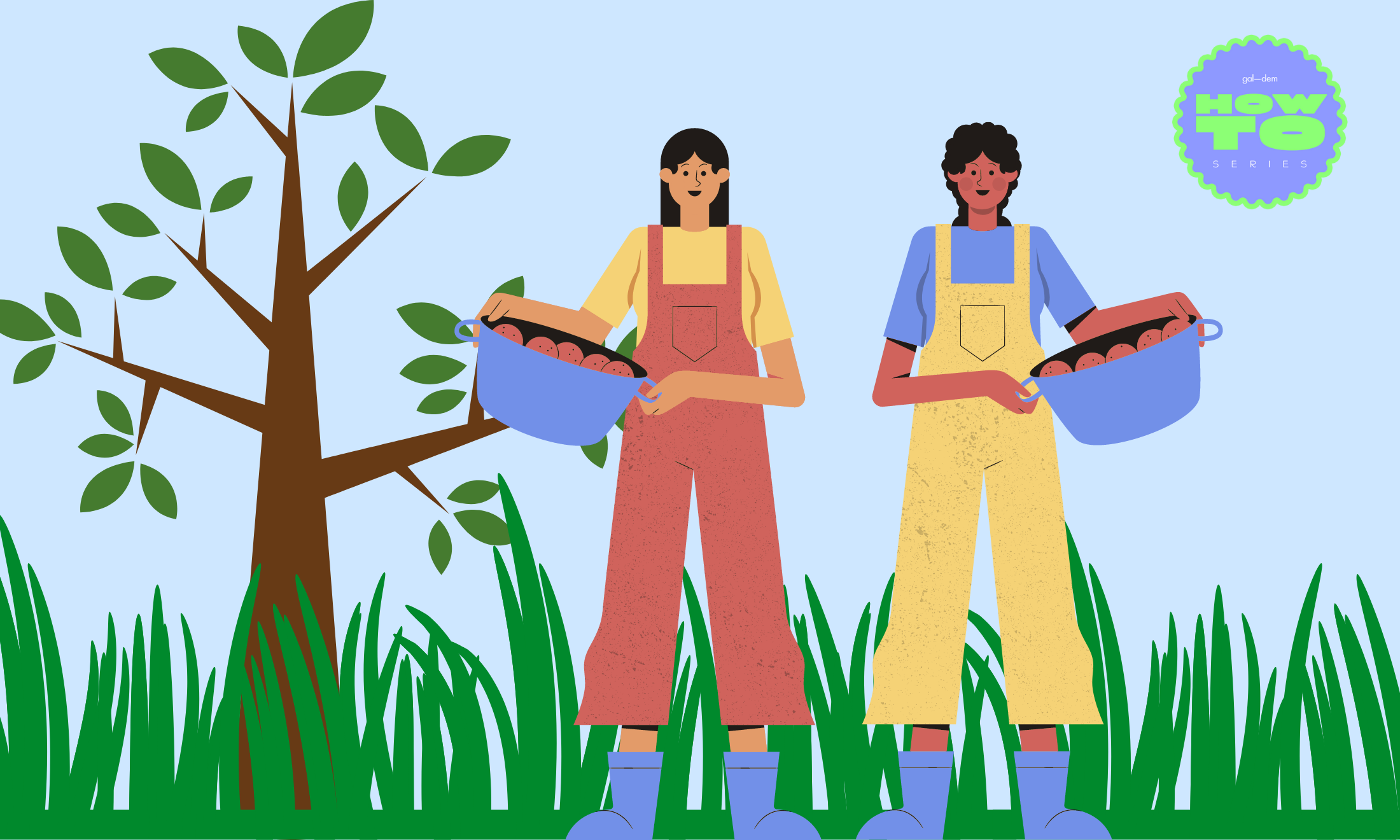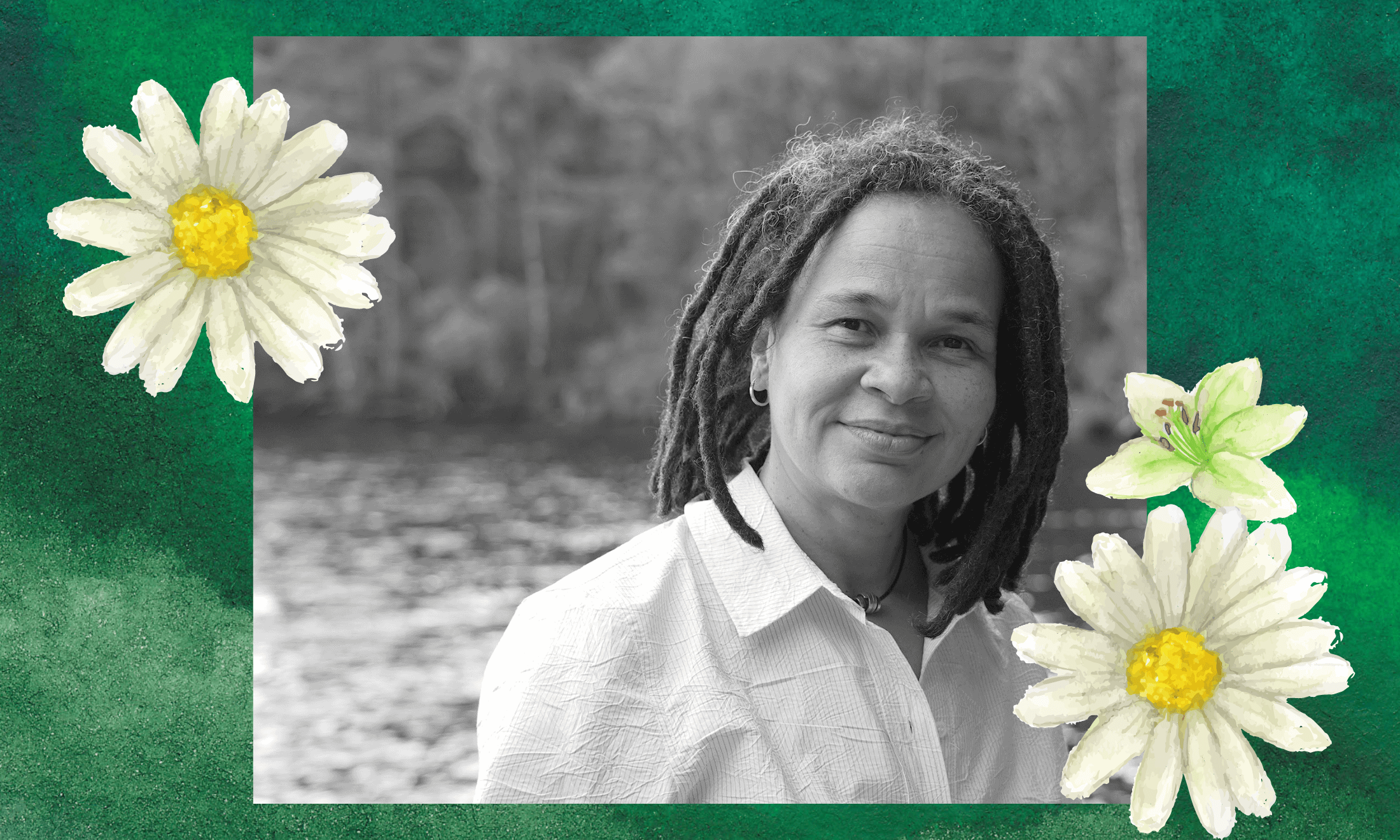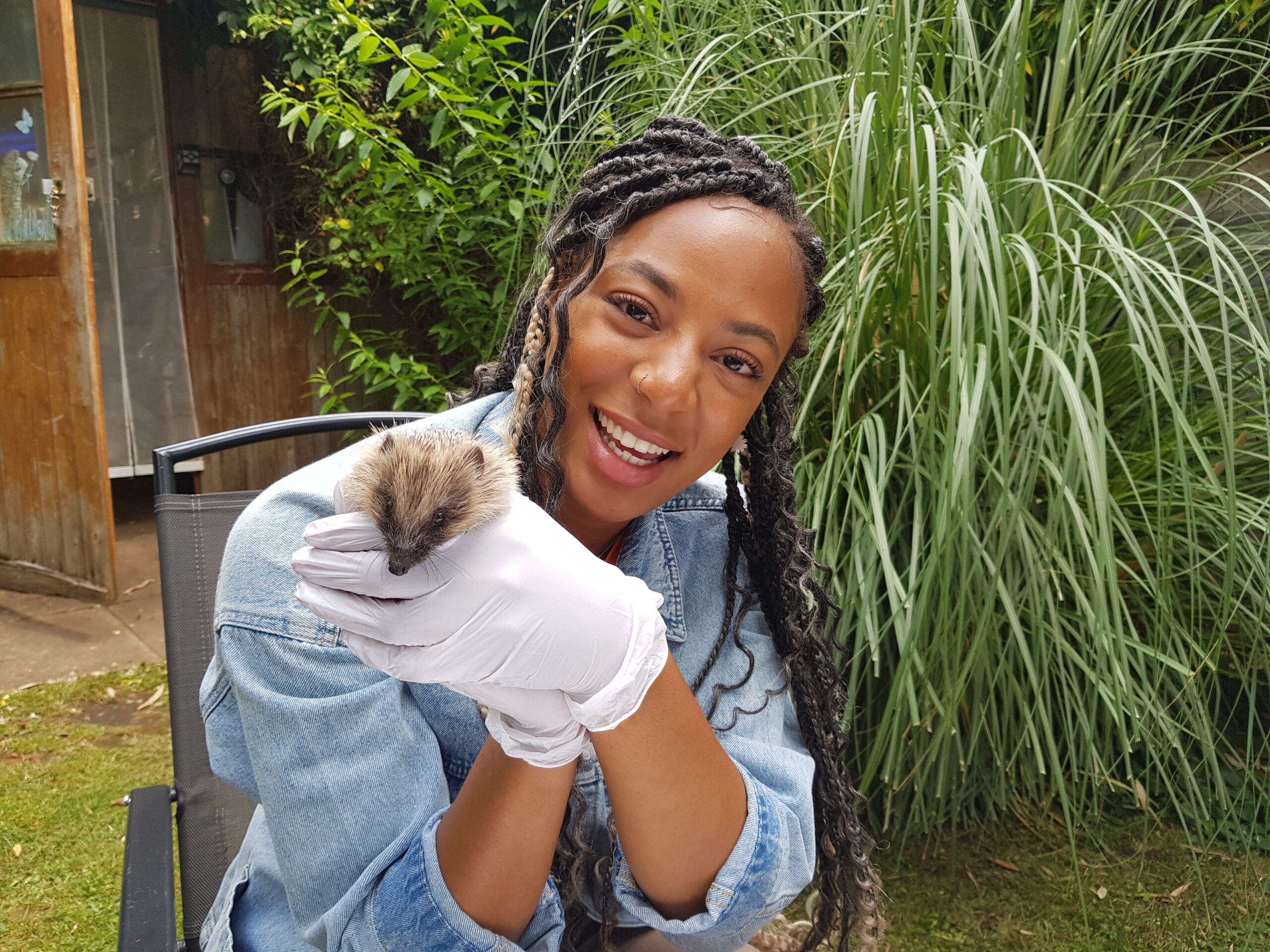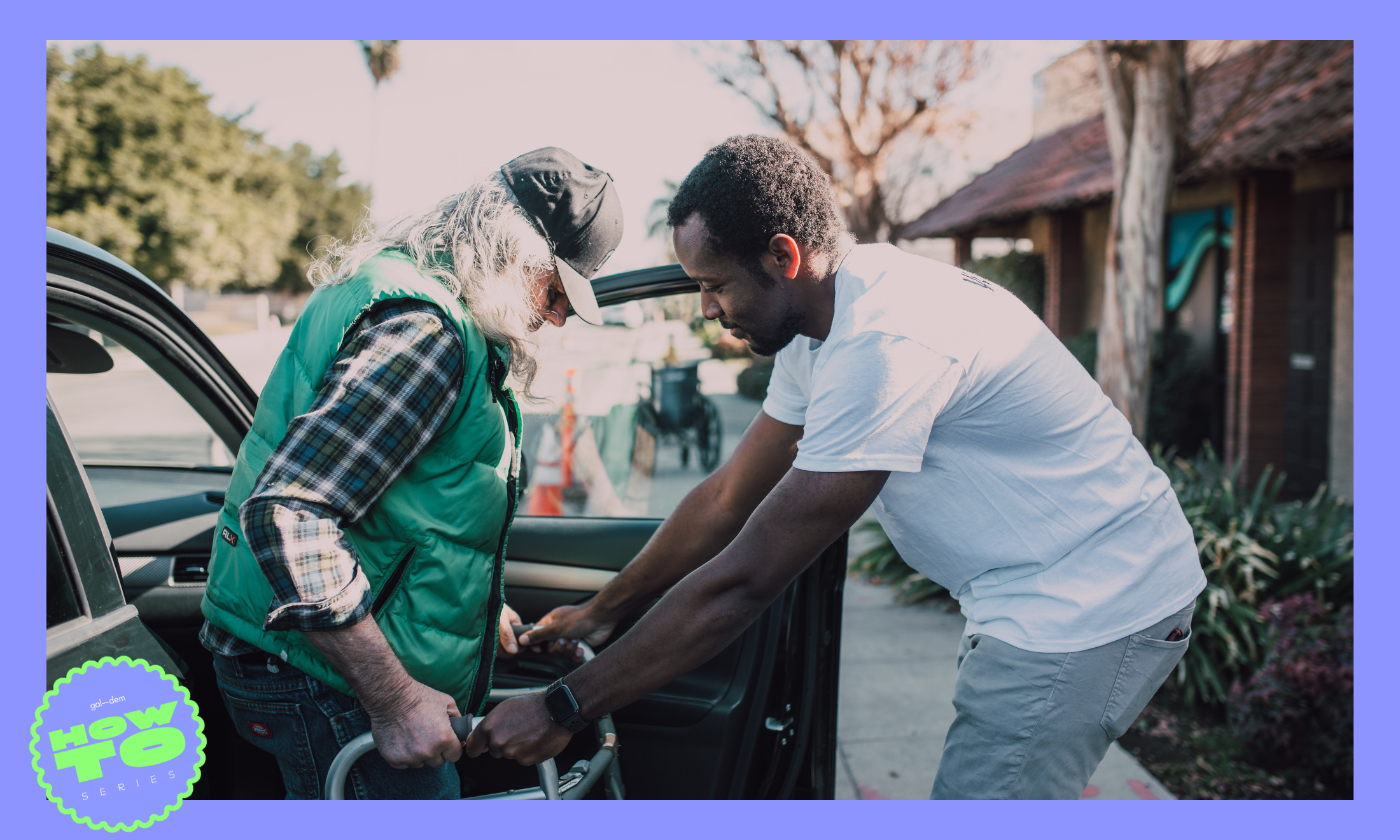The gal-dem guide to starting a community garden
How To is a gal-dem series dedicated to demystifying practical steps involved in community activism.
Nimra Shahid
07 Mar 2022

Canva
Climate change and our cost of living crisis have forced us to think differently about how we access our food and treat our planet. In England alone, 82% of the population live in urban areas, with little breathing space to embrace nature. But community gardens could offer a solution. So gal-dem has put together a guide on cultivating your own little patch of green…
Where to start?
From conversations with community gardeners, there’s no one-size-fits-all place to begin. For Sara Venn, a Bristol grassroots growing activist and founder of food charity Incredible Edible, the journey began on YouTube.
Scrolling the video platform five years ago, Sara found videos from Ron Finley, a Los Angeles based gardener who turned an area outside his house into a small forest. Her immediate reaction? “We need to do that too!”.
Sara had a background in horticulture, working in big events including the RHS Chelsea Flower Show. She quickly became disillusioned however with how inaccessible the gardening space was for different communities and eventually started running projects in Bristol, where anyone could come along on a Saturday morning and try their hand at growing.
In 2014 Sara organised a public meet up to get the community garden off the ground. She was blown away by the response, leading her to reach out to a wide range of communities around Bristol via Facebook groups and leaving flyers in neighbourhoods around the city. From there, Incredible Edible grew, and to date, the organisation has helped launch 57 gardening projects. For anyone looking to start their own, Sara advises to begin small: “Get some people together and plan, even if it’s just some flower beds and then grow and start thinking about things like funding later as you see how much time and capacity you have”.
How to get permission?
“It’s easier to ask for forgiveness than permission” one allotment officer at a local council told Sara and that’s the advice she passes on to gal-dem. For some places, like public parks, official permission is necessary. But often if you’re improving an area, like neglected green space on a council estate, there’s little need to get a green light before action, she says.
That doesn’t mean to say it can’t be challenging. The bureaucracy that exists around accessing some green spaces through local authorities can be enough to throw people off trying but Sara argues it’s important not to take the first no as a final answer, but instead make a strong case for your green plot. “Councils will argue ‘but what if local communities ruin the space?’ And I say ‘but what if they don’t? What if they have the chance to better our city?’”.
Jim Sheeran, gardener at St. Raphael’s Edible Garden in Wembley, London, knows a bit about battling with councils.
The community initiative originally started around seven years ago as part of Sufra NW Food Bank for those in need. There was an underlying ethos among those running the food bank that they would try and ensure the people coming for help would be equipped with skills and resources that meant they wouldn’t be dependent on the bank in the long haul. This principle became a backbone for what the community initiative is today.
Volunteers would offer food at Sufra to beneficiaries but also began providing education on how to cook and ultimately, give them alternatives to cheap and quick fast food. The idea was that people could learn and prepare affordable nutritious meals themselves. Volunteers began a cooking class every Friday and the community kitchen hall would be open. In parallel to the initiative, local tenants had been campaigning for the council to do something with a piece of waste ground, without much luck – until the food bank became involved.
Tenants had a plan but they didn’t have the resources or contacts to make it happen. When Sufra moved its premises to St. Raphael’s Estate, its team reached out to local building companies working on the Wembley Central train station who had a budget that needed to be invested back into the local community. Sufra asked them to build a local perimeter fence and the local residents were involved from start to finish. By 2014, the St. Raphael’s Edible Garden was born.
How do you know what to grow?
For Sara, advising gardeners on what to grow comes down to their time and capacity. The first question she’ll ask is: ‘How much time do you have in a week?’ That will determine what the most suitable plants, fruits and vegetables are to grow.
At St. Raphael’s, the growth is as diverse as the local community, with the fruit and vegetables being used for meals cooked in the food bank while leftovers are pumped back into the compost to produce new life.
“We will try to grow anything!” Jim tells gal-dem. “Our volunteers have successfully grown plants which are regularly used in Indian cuisine – chilli, aubergine, coriander, spring onion and tomatoes. Caribbean residents helped us to grow peas, beans, callaloo, chickpea, and bananas”.
St Raphael’s have a dedicated ‘Produce Grower’, who holds a wealth of knowledge on ’no dig’ growing. This leaves the soil healthier, less disturbed and will allow plants which like their location to thrive.” When Jim mentioned that St. Rapahel’s will try to grow anything, he was not exaggerating. Another volunteer, Kelly, directs me to a selection of mint in a small garden that includes chocolate and apple flavours.
Kelly points out a cluster of woodlice tucked under sections of tree trunk surrounding some pineapple mint. They’re breaking down the wood, so the volunteers can grow compost for the food bank, she says.
“We could have put a picket fence there,” Kelly reflects. “But we wanted to create an experience where people can stop thinking about what’s clawing away at the inside of their head and focus on planting seeds”.
How many people do you need?
For anyone starting out, Sara emphasises the key is to start small and grow bigger: “I think the thing with community gardens–” she says. “Is that you can go in as a group with this great massive plan, and this huge idea, and not really has worked out how much time you’ve got, or how much energy you’ve got, or, you know, when people are holidays, or if people have kids off sick, from school, and all of that kind of stuff, or sort of, you know, plays into how much energy you can give a space.”
“We have probably about 30 people who are in the kind of core theme of the organisation. And then all of the people who work on the community gardens kind of separately. So each community garden has a group around it of probably about 10 people”. Ultimately, Sara estimates, there’s about 600–700 people involved.
Where do you find funding and partnerships?
Money comes from a diverse range of sources for Incredible Edible but Sara says it’s important to focus on growing first and then figuring out what money is needed for. Once it’s established that funding is needed, some local councils provide ‘green grants’.Alternatively, there is scope for the community to financially contribute too – if a group of people each agree £5 into a garden, that’s already a start. The most important thing for St Raphael’s is that anyone in the city feels the gardens are accessible to them.
The community initiative educates local residents in growing their own food while also working with former offenders, local schoolchildren and patients receiving treatment for mental health and addiction through a program known as ‘social prescribing’. St. Raphael’s also works with corporate partners, to organize ‘away days’ where big companies can pay around £250 for their staff to volunteer at the garden.








